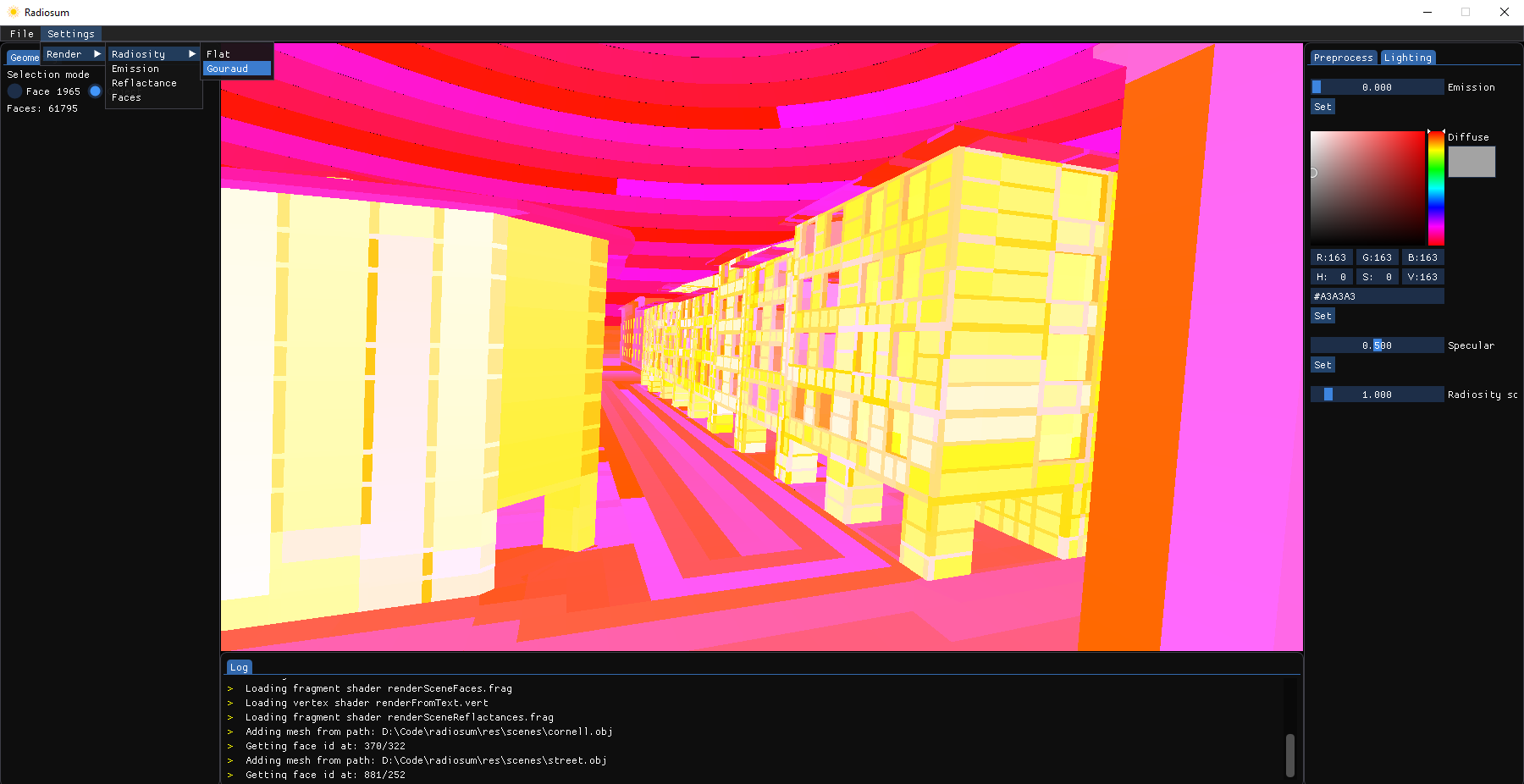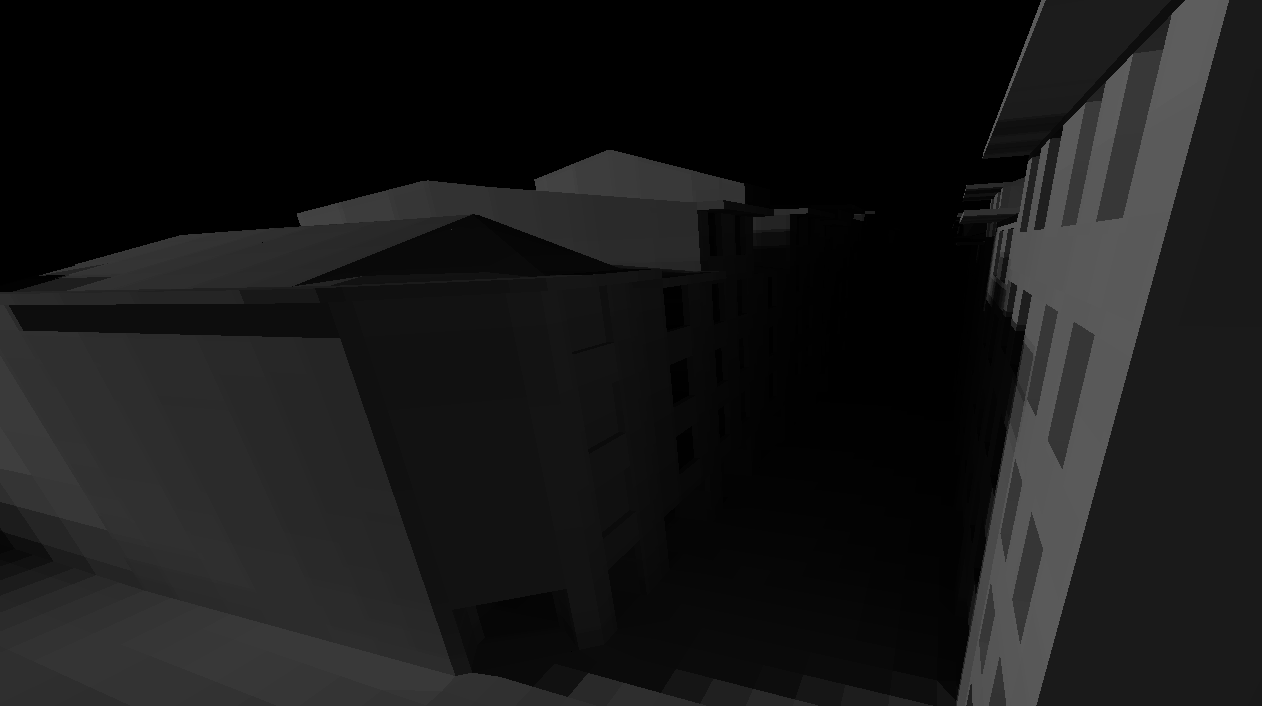Radiosum is an implementation of the methods presented in A general two-pass method integrating specular and diffuse reflection.
The approach proposed involves computing extended form factors, a geometric relationship between surfaces (or patches) that are the basis for the radiosity method. In this particular project three algoritms were developed.
Additionally, the tool includes a GUI which enables quick and simple editing of the objects/surfaces materials. Linear interpolation is optional, but already built-in.
Additional documentation can be found here. Spanish only.
Form factors are calculated using by rendering a hemicube, located at the surface's barycenter and directed by its normal. The specular extensions are derived in subsequent draw passes, by drawing the whole geometery from the portal's perspective.
Form factors are calculated using by rendering a hemicube, located at the surface's barycenter and directed by its normal. The specular extensions are derived in subsequent draw passes, rays are emitted stocastically covering the whole mirror; for each of these rays its reflection path is followed.
Form factors are derived from a stochastic process, which involves casting rays from pseudo-random directions included in the hemisphere centered at the surface's barycenter. The rays' path is followed, and additional rays are casted when a hit with a specular surface is registered.
Radiosum was built, tested and thought as a Windows only project, since graphics drivers are heavily optimized in the platform. Third party libraries include:
- SDL2
- Embree
- GLEW
- Dear ImGUI
- GLM
- SDL2Image
- Eigen

